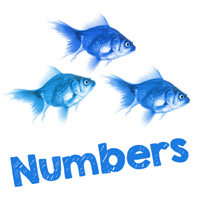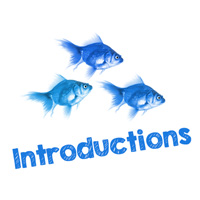
Signs That Are Close... But Not the Same — Calendar Signs
This article is part of our “Signs That Are Close... But Not the Same” series, which highlights signs that look similar, but have different meanings.
The ASL signs shown below look similar, but are not the same. There are many ASL signs that when produced look similar, but in fact have a completely different meaning. Below you will find examples of such signs. Watch closely to see if you can see the differences. In addition, watch my eyebrows, look to see when I tilt my head or lean my body in a certain way, even what my mouth is doing. These nuances are called inflections and trust me, inflections matter.
These examples are all calendar signs.
1. Day vs. Today
DAY and TODAY look similar because they both include the sign for DAY. However, TODAY is a compound sign merging NOW + TODAY. You can remember how to sign TODAY because TODAY is the DAY happening NOW.
 |
2. Tomorrow vs. Yesterday
TOMORROW and YESTERDAY both use the 10 or Open A handshape on the side of the face, however, the palm orientation and movement is different. TOMORROW has the palm toward the face and moves forward, while YESTERDAY has the palm facing forward and moves backward towards the ear. You can remember TOMORROW moves forward because it is in the future and YESTERDAY moves backward because it is in the past.
 |
3. Born vs. Birthday
BORN and BIRTHDAY look similar because they both include the sign for BORN. However, BIRTHDAY is a compound sign merging BORN + DAY. You can remember how to sign BIRTHDAY because it means you were BORN on that DAY.
 |
4. Days of the Week: Monday, Tuesday, Wednesday, Friday, Saturday
Five of the days of the week look very similar: MONDAY, TUESDAY, WEDNESDAY, FRIDAY, and SATURDAY. They look similar because they all use the same movement and palm orientation. You can think of the circular motion representing the concept of a day being a cycle.
The handshape for each sign is different. You can remember how to sign each of these since they each use the handshape that matches the first letter of the word.
- MONDAY uses the M handshape.
- TUESDAY uses the T handshape.
- WEDNESDAY uses the W handshape.
- FRIDAY uses the F handshape.
- SATURDAY uses the S handshape.
 |
||
5. Thursday vs. High School
THURSDAY and HIGH SCHOOL look similar because they are both formed by signing two letters, which also look alike. THURSDAY is signed by fingerspelling the abbreviation T-H. HIGH SCHOOL is signed by lexicalized fingerspelling the abbreviation H-S. They look so similar since they both use the letter H and the other letters, T and S, are similar looking handshapes. Context is usually helpful in letting you know quickly which sign is being used.
Why isn't THURSDAY signed like the rest of the days of the week? The T handshape moving in the circular motion is already used for the sign for TUESDAY. There is also another sign variation for THURSDAY where you use the H handshape in a circular motion.
 |
6. Sunday vs. Wonderful
It’s no wonder WONDERFUL and SUNDAY are often confused — they both use two hands, in the 5 handshape, with the palm facing forward, and start in the same location with your hands held up on either side of your head.
However, you will notice the motion made when signing these two signs is different. When signing WONDERFUL, your hands make small forward movements; when signing SUNDAY, your hands start by your head and then move down to shoulder level.
To remember the difference between these signs, when signing WONDERFUL, think of giving someone two high fives to congratulate them on something great or WONDERFUL.
If you know how to sign all of the days of the week, you may have always wondered why SUNDAY is signed differently from all of the other days (the signs for the other days of the week incorporate the first letter of the word, or in the case of THURSDAY, the first two letters). Historians as far back as 1885, described the sign for SUNDAY originating from thinking of SUNDAY as a holy day. Some say the two raised, open hands represented the large, opened doors of a church. Others have described the sign as a gesture of praise to God.1 So, to remember the sign for SUNDAY, you may think of how church is often on SUNDAY and the hands represent two big church doors, and/or the motion made is for giving praise or hallelujah.
 |
7. AM vs. PM
AM and PM look similar because they are both formed by signing two letters, which also look alike. AM is signed by fingerspelling A-M. PM is signed by fingerspelling P-M.
You can always ask for clarification if you missed which one was signed. The signer may repeat the sign or they could sign MORNING, AFTERNOON, or NIGHT to help describe the intended time of day.
 |
8. Noon vs. Midnight
NOON and MIDNIGHT both have the non-dominant arm in the B handshape, horizontal with the palm down. This arm represents the horizon.
You can remember the dominant hand is pointing up when signing NOON, because the sun is up at noon (above the horizon and above your horizontal, non-dominant hand), while the dominant hand is pointing down when signing MIDNIGHT, because the sun is down (below the horizon and below your horizontal, non-dominant hand).
These two signs also use different handshapes on the dominant hand. NOON uses the B handshape on the dominant hand, and MIDNIGHT goes from a closed fist to a 2 handshape two times, which is the sign for 12 (midnight is at 12). There is also another sign variation for NOON with the dominant hand signing 12 as well.
 |
9. Afternoon vs. Night
Like, NOON and MIDNIGHT, AFTERNOON and NIGHT both have the non-dominant arm in the B handshape, horizontal with the palm down. This arm represents the horizon.
The dominant hand, with the palm down, is extended above the non-dominant hand. When signing AFTERNOON the dominant hand makes a downward movement two times, above the non-dominant hand at chest level. When signing NIGHT the dominant hand bounces twice on top of the non-dominant hand. You can remember the placement of the dominant hand because it represents the sun, which is above the horizon in the AFTERNOON and coming down at NIGHT.
 |
How can I figure out the difference between signs on my own?
If you see two signs that look close, but not the same, and you’re not sure, you may use Signing Savvy features to help you figure out the difference. All of our signs have sign descriptions and memory aids that members may access. Reading the sign description and memory aids for the signs will help you figure out the small differences between them that your eyes don’t catch at first. We also recommend using the pause and slow motion feature to slow down the video, so you may take a closer look. These features are available to Signing Savvy members.
Resources
Signing Savvy is a participant in the Amazon Services LLC Associates Program, an affiliate advertising program designed to provide a means for sites to earn advertising fees by advertising and linking signingsavvy.com to Amazon properties. That means Signing Savvy may contain affiliate links. If you make a purchase after clicking on an affiliate link, your cost will be exactly the same regardless, but Signing Savvy will automatically receive a small commission. Your support is greatly appreciated and helps us continue to improve Signing Savvy!
ADVERTISEMENTS
 Brenda Cartwright is a Coda, seasoned interpreter, a master teacher, well known presenter, and author of several best selling sign language and interpreting textbooks from the RID Press. For 35 years Brenda was the Chair of the Sign Language Interpreter Program at Lansing Community College in Lansing, Michigan.
Brenda Cartwright is a Coda, seasoned interpreter, a master teacher, well known presenter, and author of several best selling sign language and interpreting textbooks from the RID Press. For 35 years Brenda was the Chair of the Sign Language Interpreter Program at Lansing Community College in Lansing, Michigan. Signs That Are Close... But Not the Same — Numbers
Signs That Are Close... But Not the Same — Numbers Signs That Are Close... But Not the Same — Introductions
Signs That Are Close... But Not the Same — Introductions Signs That Are Close... But Not the Same - Alphabet
Signs That Are Close... But Not the Same - Alphabet








Savvy User RebeccaEThursday, December 4, 2025
Dear BC,
How do i sign...
Everyday...
Every Friday...
This Weekend...
Last Weekend... vs The Last Weekend...
Thank you for including additional guidance with these concepts ~REstelle